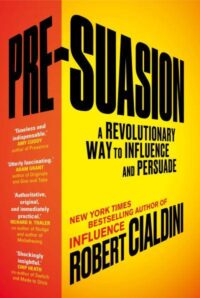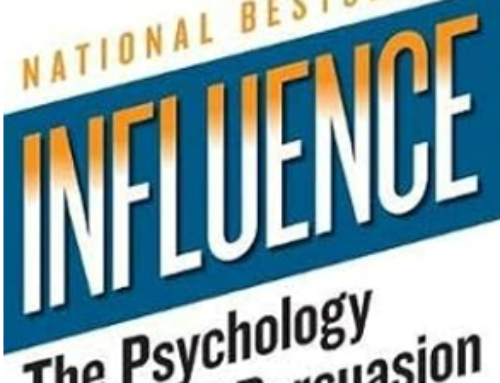Reading Notes for:


BACK ROADS TO ATTENTION: Managing the Background
In an article largely overlooked since it was published in 2002, they described how they were able to draw website visitors’ attention to the goal of comfort merely by placing fluffy clouds on the background wallpaper of the site’s landing page.
Seemingly dismissible information presented in the background captures a valuable kind of attention that allows for potent, almost entirely uncounted instances of influence. The influence isn’t always desirable, however.
One study found that the reading scores of students in a New York City elementary school were significantly lower if their classrooms were situated close to elevated subway tracks on which trains rattled past every four to five minutes. When the researchers, armed with their findings, pressed NYC transit system officials and Board of Education members to install noise-dampening materials on the tracks and in the classrooms, students’ scores jumped back up.
Employers, for the sake of their workers—and their own bottom lines—should do the same.
Classrooms with heavily decorated walls displaying lots of posters, maps, and artwork reduce the test scores of young children learning science material there.
Inviting Favorable Evaluation
Relevant here is Bernard Cohen’s observation about press coverage—that it doesn’t so much tell people what to think as what to think about. Any practice that pulls attention to an idea will be successful only when the idea has merit. If the arguments and evidence supporting it are seen as meritless by an audience, directed attention to the bad idea won’t make it any more persuasive.
A lot of research has demonstrated that the more consideration people give to something, the more extreme (polarized) their opinions of it become.
Still, if you have a good case to make, there are certain places where those tactics will give your persuasive appeals special traction. One such place is in a field of strong competitors.
Easily copied advances in development technologies, production techniques, and business methods make it hard for a company to distinguish the essence of what it offers—bottled water, gasoline, insurance, air travel, banking services, industrial machinery—from what other contestants for the same market can deliver. To deal with the problem, alternative ways of creating separation have to be tried. Retailers can establish multiple, convenient locations; wholesalers can put big sales staffs into the field; manufacturers can grant broad guarantees; service providers can assemble extensive customer care units; and they all can engage in large-scale advertising and promotional efforts to create and maintain brand prominence. But there’s a downside to such fixes. Because these means of differentiation are so costly, their expense might be too burdensome for many organizations to bear.
Could resolving the dilemma lie in finding an inexpensive way to shift attention to a particular product, service, or idea? Well, yes, as long as the spotlighted item is a good one—a high scorer in customer reviews, perhaps. Critical here would be to arrange for observers to focus their attention on that good thing rather than on rivals’ equally good options. Then its favorable features should gain both verification and importance from the scrutiny.
Already some data show that these twin benefits can produce a substantial advantage for a brand when consumers focus on it in isolation from its competitors. Although the data have come from different settings (shopping malls, college campuses, and websites) and different types of products (cameras, big-screen TVs, VCRs, and laundry detergents), the results all point to the same conclusion: if you agreed to participate in a consumer survey regarding some product, perhaps 35-millimeter cameras, the survey taker could enhance your ratings of any strong brand—let’s say Canon—simply by asking you to consider the qualities of Canon cameras but not asking you to consider the qualities of any of its major rivals, such as Nikon, Olympus, Pentax, or Minolta.
However, all of these advantages for Canon would drop away if you’d been asked to consider the qualities of its cameras but, before rating those qualities, to think about the options that Nikon, Olympus, Pentax, and Minolta could provide.
Sometimes I am to evaluate a single experience such as a recent hotel stay,
My focused attention to their mostly favorable facets with no comparable attention to the mostly favorable facets of their ablest rivals.
But surely the typical highly placed decision maker wouldn’t settle on an important course of action without evaluating all viable alternatives fully, and he or she certainly wouldn’t make that choice after evaluating just one strong option, right? Wrong and wrong, for a pair of reasons. First, a thorough analysis of all legitimate roads to success is time consuming, requiring potentially lengthy delays for identifying, vetting, and then mapping out each of the promising routes; and highly placed decision makers didn’t get to their lofty positions by being known as bottlenecks inside their organizations.
Second, for any decision maker, a painstaking comparative assessment of multiple options is difficult and stressful, akin to the juggler’s task of trying to keep several objects in the air all at once. The resultant (and understandable) tendency is to avoid or abbreviate such an arduous process by selecting the first practicable candidate that presents itself. This tendency has a quirky name, “satisficing”—a term coined by economist and Nobel laureate Herbert Simon—to serve as a blend of the words satisfy and suffice . The combination reflects two simultaneous goals of a chooser when facing a decision—to make it good and to make it gone—which, according to Simon, usually means making it good enough. Although in an ideal world one would work and wait until the optimal solution emerged, in the real world of mental overload, limited resources, and deadlines, satisficing is the norm.

